It was back in late January 2023 that Carolyn and I found ourselves on the north-eastern coast of Queensland, Australia, in the final leg of our four month odyssey across the Pacific, that had started in Vancouver, Canada in October the previous year and come via Hawaii, Fiji, New Zealand, North and South Island, to arrive in Melbourne for New Year 2023 and our subsequent travels illustrated on the map below.
 |
| Our route so far on our travels through Australia, starting down in Melbourne just before New Year 2023. Map courtesy of https://www.freeworldmaps.net/australia/ |
The last series of three posts accounted for our arrival at Cairns, to set ourselves up in Port Douglas and experience the wonders of the nearby Daintree Forest and Atherton Tablelands as seen from the historic Kuranda Scenic Railway and Skyrail, as well as indulging my passion for WWII history, tanks and guns at the Australian Armour and Artillery Museum - links below.
 |
| JJ's on Tour - Port Douglas, Kuranda Skyrail & Great Barrier Reef, Australia. |
 |
| JJ's on Tour - The Australian Armour and Artillery Museum |
From Port Douglas we moved on to take a few days to stay in one of the most special and unique places to stay, and that's saying something when indulging in a trip like this, namely the Daintree Ecolodge, situated in the rainforest itself and a perfect location from which to explore the terrain and see up close the amazing wildlife that inhabits this tropical part of Australia.
From there we then relocated to perhaps one of my most favourite places to stay, namely the beautiful coastal resort of Palm Cove, with a name that conjures up the place perfectly and which has left me with wonderful memories of this most beautiful part of Australia.
 |
| The places visited whilst staying at the Daintree Ecolodge and Palm Grove. |
On the short drive from Port Douglas up the Cook Highway in the direction of our new accommodation at the Daintree Ecolodge, we decided to head on a bit further up the coast to Cape Tribulation and Mount Alexandra.
 |
| A copy of Cook's original chart showing the track of the Endeavour and a close up of the area of Cape Tribulation and its many close in coral reefs. |
Cook recorded
On our drive up to the cape we came across a river ferry crossing with a few unusual hazards thrown in for good measure.
The drive was well worth the effort, and a short walk from the carpark up to a nearby viewing point offered the schoolboy in me an opportunity to follow in the footsteps of a boyhood hero as I gazed out towards Captain Cook's Cape Tribulation.
The signs in this neck of the woods have a certain theme and so we kept a healthy distance from water, salty and fresh, and kept on moving.
As well as watching out for crocodiles our attention was naturally drawn to the trees, with the ever incessant calls of local birdlife.
The views were simply breath taking and it's so important that this ancient natural landscape is preserved for future generations to enjoy and appreciate.
Each of the lodges are air conditioned with views out over the communal reception and dining area situated on a small pond, home to many croaking frogs that burst into song each evening.
As you can see you are right in among the canopy of the surrounding forest with all the sound of its inhabitants a constant accompaniment.
Our skipper was a local of many years experience and well versed in spotting creatures that visitors such as us might well have overlooked until instructed in what to look for and where exactly to cast ones gaze.
As well as the river itself, the banks clad in mangroves were where most creatures who make a living on the river tend to hide and search for food and we soon started to observe the animals that call the Daintree River home.
It was not long before the creature we were keen to get a look at and the subject of all the warning signs came into view, although these chaps were a lot less intimidating as they were babies, doing their best to avoid getting eaten by their bigger relations, whilst hoping to eat themselves and grow big enough to get to the top of the food chain in these parts.
In the next stage of our journey through Australia we would meet the fully grown version of this creature, an animal that is so good at what it does, namely catching prey and eating it, that it only fails to catch what it attacks ten per cent of the time, which explains the signs warning the negligent and just plain stupid what they are messing with.
Palm Cove certainly lives up to its name with the pictures of the beach front that greeted us on arrival at our accommodation more than living up to the pictures such a name conjures in the mind.
The town is a vibrant little community with lots of restaurants and bars along the front promenade to keep visitors and locals happily entertained in the warm evenings and sunny afternoons simply soaking up the beauty of the place.
Of course the signs about make sure you are still paying attention to the neighbours with an occasional 'Salty' now joined by a couple of species of jellyfish that are very much better avoided.
One of the fun aspects of foreign travel is experiencing the cultural differences in the places you visit, not so readily expected in countries that share a cultural heritage with home such as Australia and New Zealand, but Carolyn found the sign below a little bit disturbing, regularly appearing in the ladies toilets, and totally not something seen at home, all later explained to us by our Australian friends.
The fun of sharing this trip here on the blog is looking back at these pictures of the coast and beaches of this part of North Queensland bringing back some great memories, especially now back in a rather chilly and wet UK as I type up this post over a year later.
This part of Australia is one of the most beautiful places in the world that I have had the privilege to visit and together with the other amazing places we visited on this trip explains why Carolyn and I were definitely suffering from 'Wow Fatigue' on our return home.
Curtain Fig Tree, Atherton Tablelands
One such area was the Atherton Tablelands that we travelled along the edge of during our train journey from Kuranda, with the town of Kuranda and its market, top on Carolyn's list but also another look at the Barron Falls which we were so lucky to see on our return visit quite different from the previous trip, now, following a few days of incessant rain, in full flood with all the drama of the noise a big waterfall can generate.
On our return visit, and not having to stay on the train, we parked the car and enjoyed a leisurely walk and a chance to visit the famous Curtain Fig Tree, a 500-year old strangler fig that has been associated with organised tourism on the Atherton Tableland since the 1920s.
Access to the Curtain Fig Tree from the road is via a wide timber boardwalk from the roadside car park where there is a sheltered interpretation board that outlines the importance of the mabi rainforest and the history of the Curtain Fig Tree.
Since the 1890s the tropical vegetation of the Atherton Tableland has been known variously as scrub, jungle and more recently, mabi rainforest. The term "rainforest" was coined in 1898 but it was not a descriptor applied to the tropical vegetation of the Cairns region until the 1970s.
The name "mabi" is derived from a local Aboriginal word for the rare Lumholtz's tree-kangaroo, the largest mammal found in this rainforest. Logging, agriculture and urban development on the Tableland has resulted in significant loss of mabi rainforest and it is listed as endangered under the Commonwealth Environment Protection and Biodiversity Conservation Act 1999.
The Curtain Fig Tree, seen above and below, is a heritage-listed tree and is one of the largest trees in Tropical North Queensland and also one of the best known attractions on the Atherton Tableland.
The Curtain Fig Tree is of the strangler fig species Ficus virens. Normally these figs germinate on top of another tree and try to grow roots into the ground. Once this important step is accomplished, the fig will grow vigorously, finally kill the hosting tree and then grow on independently. In this case, the hosting tree tilted towards a neighbouring tree, and the fig also grew around that one. Its curtain of aerial roots drops 15 metres (49 ft) (49 feet (15 m)) to the ground.
Although these figs kill their hosts, they are an epiphyte which basically feeds from the ground, unlike a parasitic plant which feeds from the sap of the host plant/tree.
Twelve species of birds are endemic to this area and the mountain ranges immediately south of it, with the Bower's Shrike-Thrush one of them, and the area described as one of the most important bird areas in Australia.
As mentioned logging, agriculture and urban development on the Tableland resulted in significant loss of mabi rainforest with agriculture now the largest industry in the Tablelands Region with crops grown around Atherton including banana, sugarcane, corn/maize, avocados, strawberries, macadamia nuts and mangoes and citrus, together with a small amount of dairy farming.
As proclaimed here on the blog, I love the passion for historical wargaming, which I think makes me equally appreciative of seeing passion in others for the things that makes life more interesting and worthwhile, and the folks that run the Tolga Bat Hospital have that passion for their calling in spades.
The large flight cage for flying foxes was built in 2003. It is 12 metres wide, 14.5 metres long, 3 metres high at the sides and 6 metres high in the middle. There are no internal posts. It has a waterproof cover and shade-cloth over 4.5 metres at one end where the Feeding cages are located. It is lined externally with galvanised wire mesh 25mm by 12mm, and internally with 25mm square netting. The netting is tensioned away from the wire, or hangs vertically down to provide a soft landing for the bats, protecting their wings from the harshness of the wire mesh.
Paralysis ticks (Ixodes holocyclus) are killing hundreds of Spectacled flying foxes (Pteropus conspicillatus) on the Atherton Tablelands every year, from about October to December.
Flying foxes are bats that do not use echolocation, have large eyes and eat fruit and nectar. They can be called bats, flying foxes, fruitbat, megabats or yinptero-chiroptera. Some prefer to avoid the term fruitbat as it doesn’t acknowledge that a huge part of their diet is nectar and pollen.
Another very important role is during mast flowering events. This is when when eucalypts flower together en masse every few years, producing large amounts of seeds. The glut in seed production makes it harder for the seed predators to eat it all and there is a much better germination rate. This means that more seedlings are produced than in a normal year where the predators may consume most of the seed.
Hundreds of thousands of flying foxes have been killed in orchards over the last hundred years in Australia. Onsite methods of killing apart from shooting have been electric grids and poisoning.Microbats are defined as bats who primarily use echolocation for navigation and finding food. All bats are in the order Chiroptera. ‘Chiro’ (like chiropractor) means ‘hand’, ‘ptera’ (like pterodactyl) means ‘wing’. The wing of a bat is very similar to our hand (and arm) in bone structure but with elongated metacarpals.
"...the north point [was named] Cape Tribulation because "here begun all our troubles"
In 1983 this part of Queensland became the focus of local determination to prevent the destruction of the rainforest in this area with plans to drive a major highway through it to complete the coastal link to Cooktown further up the coast.
 |
| The road leading through the rainforest up to Cape Tribulation |
Hoorah for locals and their determination in that we folks today can be grateful for the preservation of this stunningly beautiful piece of ancient rainforest and its coastal area that has since been granted a World Heritage Listing in 1988.
Thanks to Captain Cook and modern navigational aids, sea travel is a lot more secure than in previous times and the large ships seen beyond the reefs show the importance of shipping raw materials and minerals to the Australian economy.
After a very pleasant walk along the beach, the call of nature beckoned, and on walking back from the toilets Carolyn asked me if I had noticed the rather large spider I had passed on the way out.
'What spider?'
'The one the size of a tea saucer, next to your left ear!'
 |
| Golden Orb Weaving Spider, with Carolyn's hand providing a size comparison. |
From Cape Tribulation we backtracked along our route and pulled in at a roadside lookout that offered stunning views along the coast here and the Wet Tropics World Heritage Area that is the rainforest clad slopes of Mount Alexandra.
Daintree Ecolodge
Our next stopover in this part of Queensland was much anticipated and I frankly was unsure exactly what to expect after the build up of reading the information about our ecolodge accommodation, and I have to say that none of it did justice to this remarkable place.
The room was well fitted out with all the mod-cons one would expect together with an open air balcony protected from anything hoping to come in and bite you by a mosquito proof gauze netting thus allowing the perfect setting to just read or simply sit back with a drink and enjoy the surroundings.
Staying here was a bit of a mixed blessing for me, as the opportunity to stay in the heart of the rainforest with all the cacophony and sights of nature right up close on your doorstep so to speak was too good to miss.
On the other hand, I am one of those unfortunate souls who can draw anything that can fly, bite and drink blood, of which there are multiple different creatures buzzing around in this kind of environment, and after a few days of carrying rather large itchy welts from such close encounters, was quite looking forward to moving back to the coast and the relief that beckoned.
However despite the mosquitos, I thoroughly enjoyed the experience of being this close to the forest and is one I will treasure for ever, and would heartily recommend coming here if the opportunity presents .
 |
| Can you spot the spider from this view from the dinning room window? It's there on left, before you walk straight into it. |
Whilst staying at the Ecolodge, we booked ourselves a trip on the Daintree River Cruise, specifically to get a close encounter with the fearsome Salt Water Crocodile, but also to get an impression of the other creatures that inhabit this part of Australia.
 |
| Given the time of year we were very lucky to be able to see most of the birdlife busy making arrangements for the next generation. |
 |
| The female Shining Flycatcher, very distinctive from her consort, with her white underside and light brown wing covers. |
Either way, seeing these little chaps was a reminder that if there are small ones around, then mum and dad are just as likely to be close by.
 |
| Our careful observation of the mangroves soon paid dividends. |
 |
| A baby 'Salty' working hard at surviving long enough to become top of the food chain, and responsible for all the warning signs not to disregard this formidable predator. |
Palm Cove
As mentioned I was looking forward to returning to the coast after our sojourn at the Daintree Ecolodge and an opportunity to let my collection of bites calm down without adding to the array and the associated discomfort.
 |
| We both loved our stay in Palm Cove. |
One of the fun aspects of foreign travel is experiencing the cultural differences in the places you visit, not so readily expected in countries that share a cultural heritage with home such as Australia and New Zealand, but Carolyn found the sign below a little bit disturbing, regularly appearing in the ladies toilets, and totally not something seen at home, all later explained to us by our Australian friends.
Curtain Fig Tree, Atherton Tablelands
Whilst basing ourselves in Palm Cove, we took the opportunity to visit some places previously seen during our stay at Port Douglas but demanding a return visit in the car to check out other places that we noticed first time around.
 |
| The Barron Falls putting on a show for the visitors after a few previous days of rain. |
 |
| Our first look at the Barron Falls only a few days before the picture above, showing what impact a bit of rainfall can have in this region. |
On our return visit, and not having to stay on the train, we parked the car and enjoyed a leisurely walk and a chance to visit the famous Curtain Fig Tree, a 500-year old strangler fig that has been associated with organised tourism on the Atherton Tableland since the 1920s.
 |
| Lumholtz's tree-kangaroo |
The name "mabi" is derived from a local Aboriginal word for the rare Lumholtz's tree-kangaroo, the largest mammal found in this rainforest. Logging, agriculture and urban development on the Tableland has resulted in significant loss of mabi rainforest and it is listed as endangered under the Commonwealth Environment Protection and Biodiversity Conservation Act 1999.
Although these figs kill their hosts, they are an epiphyte which basically feeds from the ground, unlike a parasitic plant which feeds from the sap of the host plant/tree.
We didn't get to spot any Lumholtz's tree-kangaroo's but the forest did manage to turn up this rather attractive Bower's Shrike-Thrush well illustrating how it got its name with the powerful beak more associated with European shrikes commonly called the Butcher Bird for its habit of catching insects and impaling them on thorns to create a larder for later feeding, and the rounded appearance of a typical British song-thrush.
One other creature Carolyn and I were hoping to see in the wild during our visit to Australia was the unique Platytpus, Ornithorhynchus anatinus, but despite a couple of attempts, driving out into the countryside and parking up near to some recommended stretches of water, we only got to see signs telling us they were about.
Still, the fun part about having an interest in wild birds is that you can usually rely on some ornithology to keep you entertained when the Duck Billed Platypus are clearly lacking, and the Willie Wagtail seen below drew similar comparisons to his British family of wagtails, especially the grey variety back home, often to be seen close to water, bobbing the tail up and down and feeding on the waterborne insect life.
 |
| The large termite mounds stand in stark contrast to the land beyond, formerly mabi rainforest and now given over to agriculture on the Atherton Tablelands. |
Tolga Bat Hospital
Another place we determined to visit was the Tolga Bat Hospital set up in 1990 to help hundreds of Spectacled Flying Foxes orphaned by a tick paralysis killing the mother bats, but which has further developed into a rescue, rehab and release facility catering to the needs of over 1000 bats a year injured or in need of specialist care to enable them to survive and return to the wild.
 |
| https://tolgabathospital.org/about-us/ |
This passion and indeed important work that the hospital performs is reliant on donations and public support but their willingness to share that work with the wider public has led the Tolga Bat Hospital to become one of the top tourist attractions in Queensland.
The hospital caters for the needs of Australian Flying Foxes of which there are four, Black, Grey Headed, Little Red and Spectacled as well as Microbats and the Small fruit and nectar bats such as Tube-nosed Fruit bats and Blossom bats.
All the waste from the flight cage, and flying foxes are very efficient at producing waste, is squeegeed off the floor and recycled though large worm farms. Cages are then hosed. All the internal feeding cages, and the Orphan cage have gutters that gravity drain into a pump-well in the big cage. A gutter pump takes the waste water to a septic system.
After tick paralysis, the entanglement of flying foxes in barbed wire is the main reason these animals can need special care to recover, with barbed wire fencing potentially causing a slow agonising death and has lead to a project for wildlife friendly fencing started in 2006.
 |
| https://wildlifefriendlyfencing.org/ |
The importance of conserving flying foxes lies in their role as a keystone species, providing the very important ecological services of long-range pollination and seed dispersal. This has become especially important with climate change as they can help mix the genetics of plants of the same species a long distance apart. The resulting genetic diversity improves their ability to adapt to climate change.
Flying foxes are the only species that can arrive in huge numbers from thousands of kms away, pollinate on this massive scale and then leave again. It’s as though nature has devised mast flowering events for the benefit of both flying foxes and the trees involved.
About 20-40 microbats a year come into care at Tolga Bat Hospital.
The hospital used to rescue about six tube-nosed fruitbats (Nyctimene robinsonii) a year, but this has now more than doubled in the last few years. They are known as eastern tube-nosed fruit bats as they occur down the eastern coast of Queensland to just across the border.
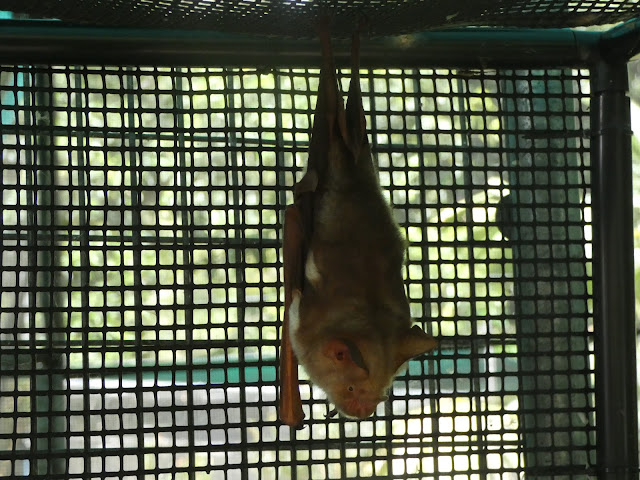 |
| Eastern Horseshoe Bat |
 |
| Microbat |
The hospital used to rescue about six tube-nosed fruitbats (Nyctimene robinsonii) a year, but this has now more than doubled in the last few years. They are known as eastern tube-nosed fruit bats as they occur down the eastern coast of Queensland to just across the border.
About 99% are found caught on barbed wire fences, and the occasional one attacked by a cat. Like the blossom bats many die from exposure fairly quickly. The extent of their injuries means that only about 35% can be released.
The wildlife friendly fencing project is working to minimise the harm that barbed wire fencing can cause these beautiful animals. Their short broad wings ensure their flight is highly manoeuvrable and they can easily hover. It is therefore extremely important that tube-nosed fruitbat have a full recovery from barbed wire injuries.
 |
| Eastern Tube Nosed Bat |
We had a fantastic afternoon visiting the Tolga Bat Hospital and would encourage folks to book and arrange a visit as well as supporting the work they do.
I came away wishing Australian bats similar protection to that enjoyed by their British cousins, under the Wildlife and Countryside Act of 1981 with prosecution very likely for anyone causing deliberate harm to these very important creatures and a joy to see in the wild.
Of course I couldn't end this look at wonderful Queensland without the birdlife getting the final word and that honour goes to a Yellow Spotted Honeyeater that entertained us in the garden of the Tolga Bat Hospital as we waited for our guided tour around the facilities and our meeting with the latest patients.
From Queensland, Carolyn and I found ourselves packing and preparing to fly out on our final leg of our tour of Australia, by heading north to Darwin in the Northern Territory, a return visit to the territory after our previous excursion inland to the red centre around Ayres Rock, but a very distinctive part of the country with as we were to find a very Northern Territory approach to life that made Darwin and the locals there about a very distinctive group of Australians.
In addition, from a military history perspective Darwin was on the frontline in WWII as the Japanese Empire came vey close to Australia here and having read up prior to our trip I was very much looking forward to seeing how that experience is remembered today.
More anon
JJ









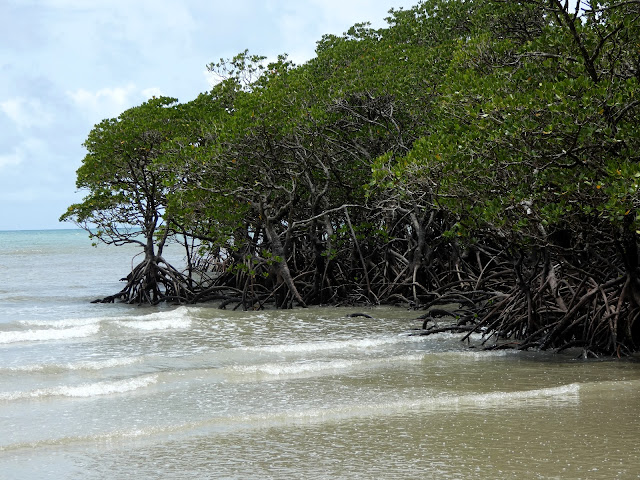








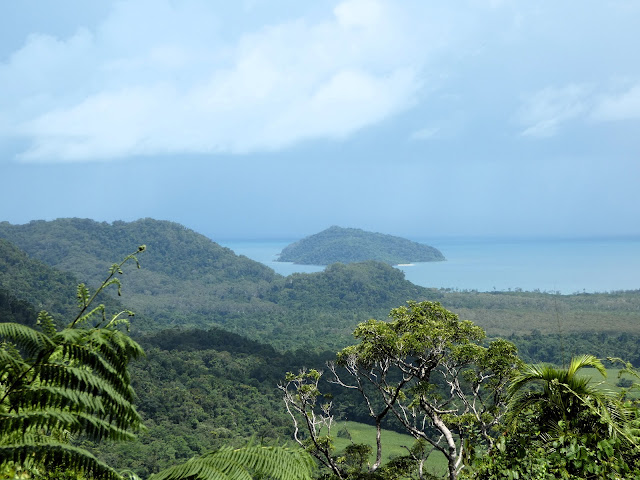




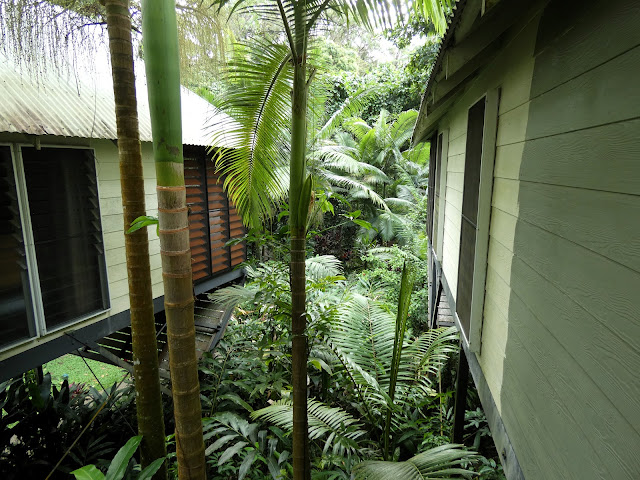

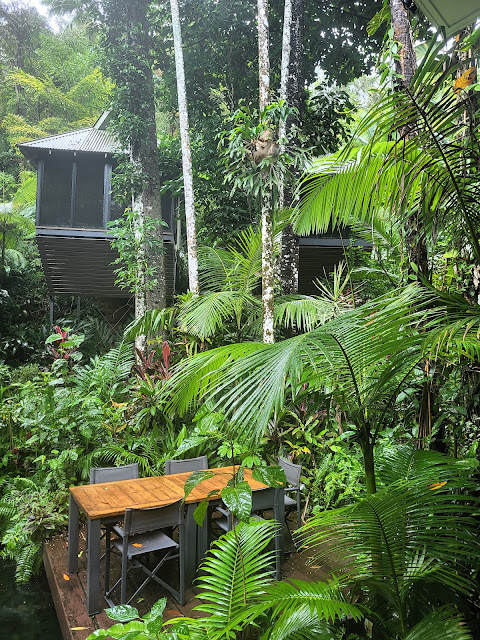
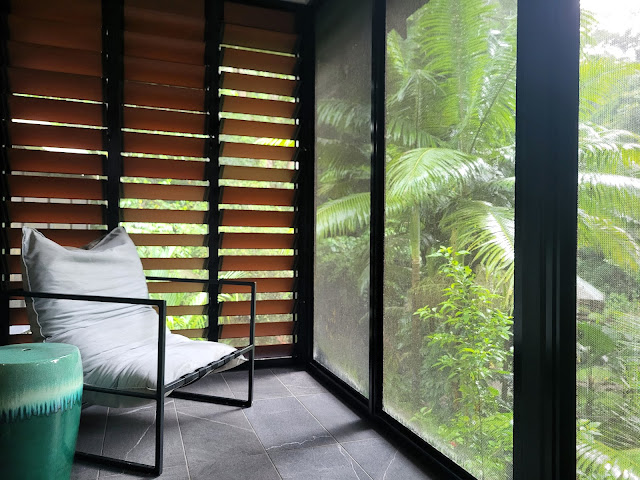










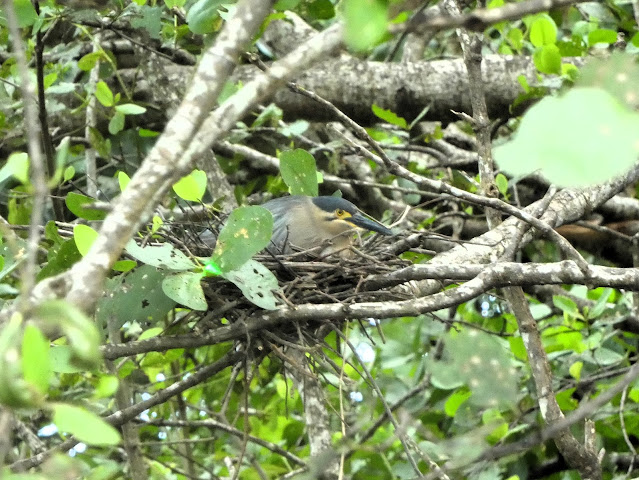


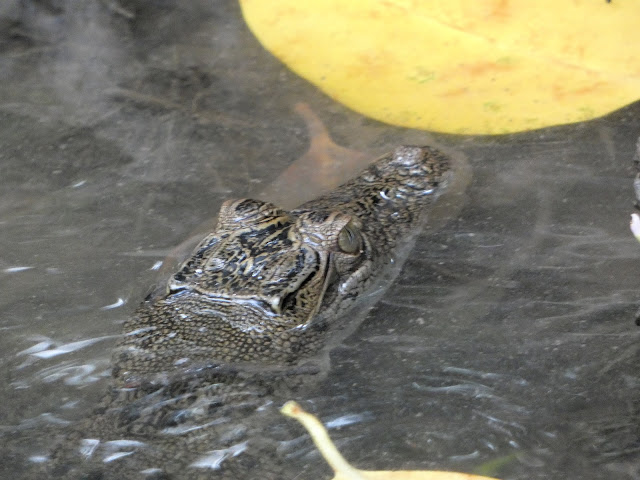



















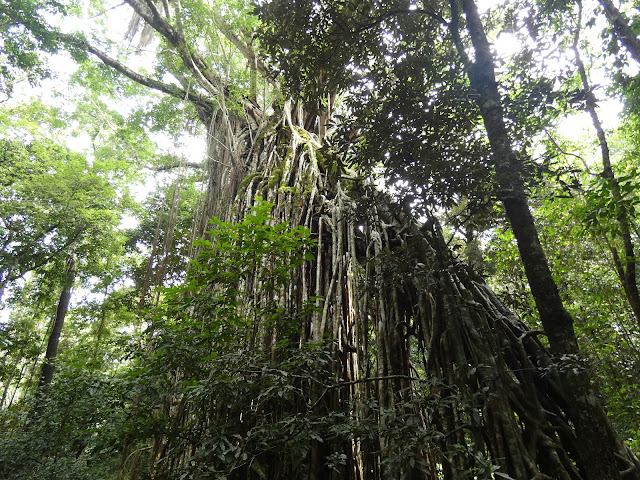




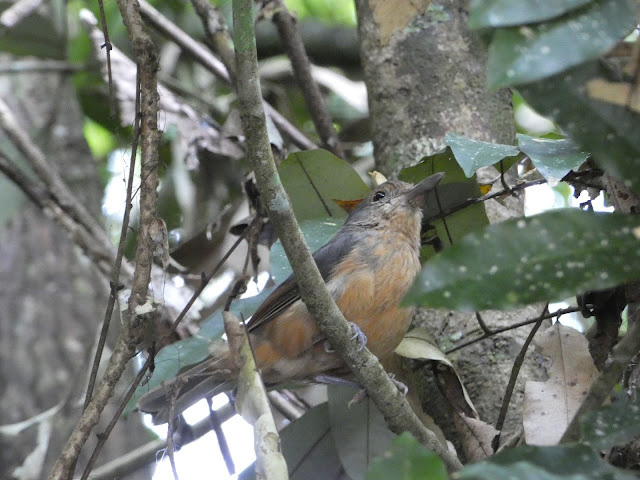


















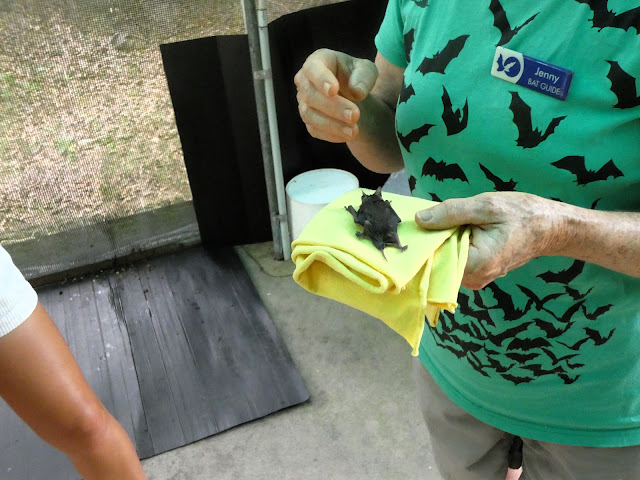





We spent 3 weeks based in Palm Cove back in 2011 and loved it. Great to see so many of the places we visited back then although I'm quite jealous about the bat hospital! Our closest encounters with crocs were in Port Douglas itself on the river which was worryingly close to our apartment!
ReplyDeleteHi Alastair,
DeleteAh yes Palm Cove, a glorious place to visit at least once in a lifetime. The bat hospital was a real treat and I hope their efforts and work are rewarded with more protection for Australian bats.
As for the crocs, we dipped out at Port Douglas but got to meet two fearsome full grown male 'Salties' on the Adelaide River near Darwin, going by the local names of 'Sneaky' and 'Agro', names granted to both of them for reasons that were explained to us on introduction. More about them in posts to come.
JJ
I realised I got my Australian trips confused. We stayed in Port Douglas for 3 weeks in 2011... Palm Cove was a stop on our honeymoon way back in 92, combined with breaks to visit friends in Brisbane and Auckland. Feels like a long time ago now (because it was!)
DeleteSunday morning and JJ. My love goes off and makes us tea out of a sense of consideration that I have never fully understood. It doesn't get much better than this. With thanks. Wives and wargames. I think sir we have both made fortuitous decisions.
ReplyDeleteGood morning, your comment dropped into my meditations about a post I'm composing about the next leg in our odyssey around Darwin.
DeleteThat sounds like a much better toast than Captain Jack Aubrey and the Gun Room's - 'Wives and sweethearts, may they never meet'. So cheers and here's to 'Wives and Wargames and the continued blessing of Fortuna'.
Have enjoyed the entries over the past few months - although never commented until now.
ReplyDeleteWe were up at Port Douglas and then Daintree and Cape Trib last week. The road north from Daintree River had just been opened the previous week after the devastating rain damage from late December 2023. There were still two places where the road was one lane only and using a queuing system - massive damage.
Hi and thank you for dropping a comment, glad you are enjoying this little excursion.
DeleteI'm glad to hear things are starting to return to normal after the deluge the area suffered and I guess you have to hope that people are safe and deal with the damage later, but I know that's not much comfort to the tax payers who have to cough up to pay for repairing the roads and infrastructure.
I saw the report on the Australian Armour Museum's YouTube channel, when I was putting the posts about the museum together, and they showed clips of the carpark, that I parked in only ten months previously, under several inches of water and they had a bit of a flood in their lower gallery where they display the small arms and uniforms.